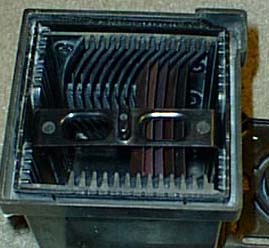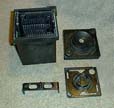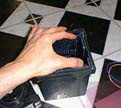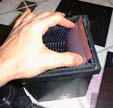 Once loaded there's a little bracket that goes on top of the film and then two lids to make it light safe. The annoying part is that the genius that designed this gadget didn't make it leak proof. The first time I used it I was very lucky that I didn't slosh all the developer out while agitating. I did have to fix the film twice though because I either didn't put in enough fixer or it all sloshed out. I simply flipped the negs around so that the top was on the bottom and refixed them saving the negs.
Once loaded there's a little bracket that goes on top of the film and then two lids to make it light safe. The annoying part is that the genius that designed this gadget didn't make it leak proof. The first time I used it I was very lucky that I didn't slosh all the developer out while agitating. I did have to fix the film twice though because I either didn't put in enough fixer or it all sloshed out. I simply flipped the negs around so that the top was on the bottom and refixed them saving the negs. |






